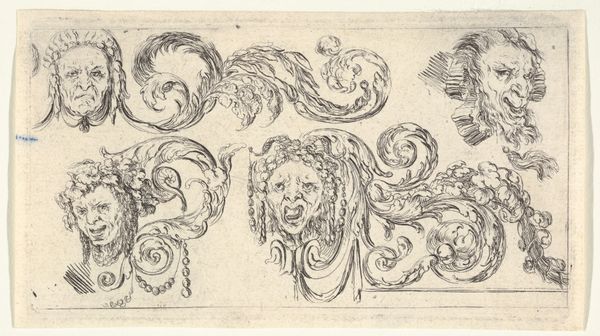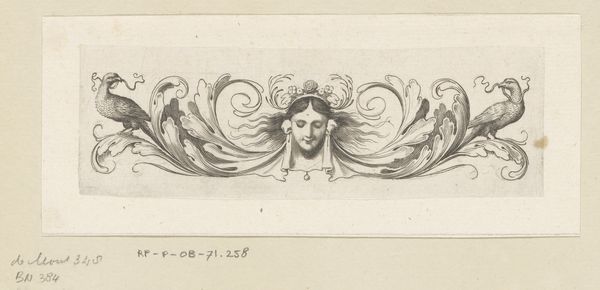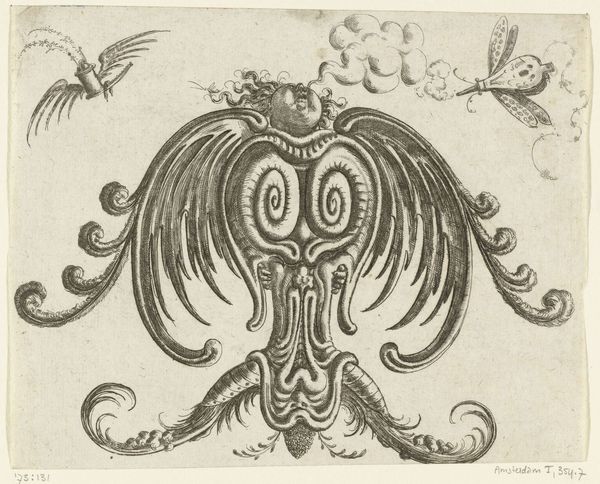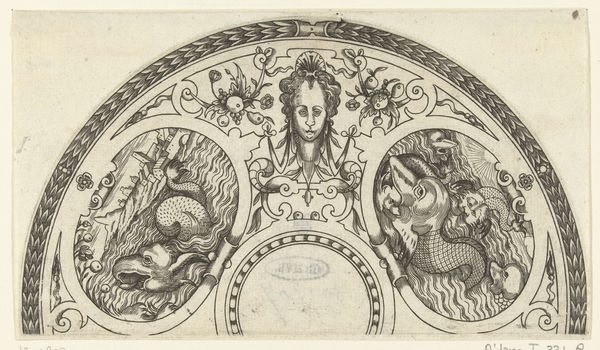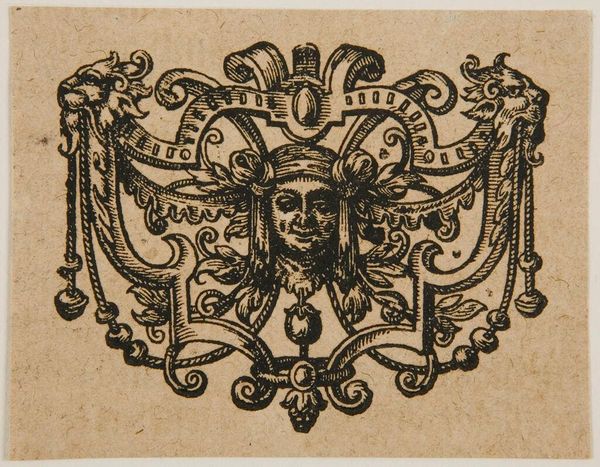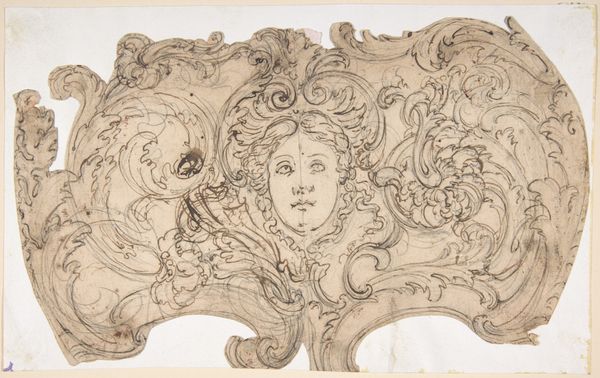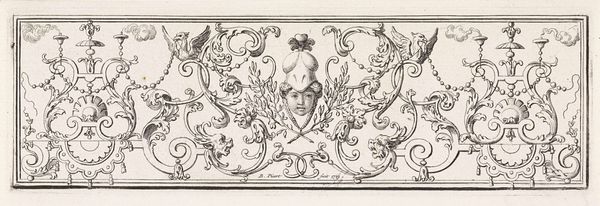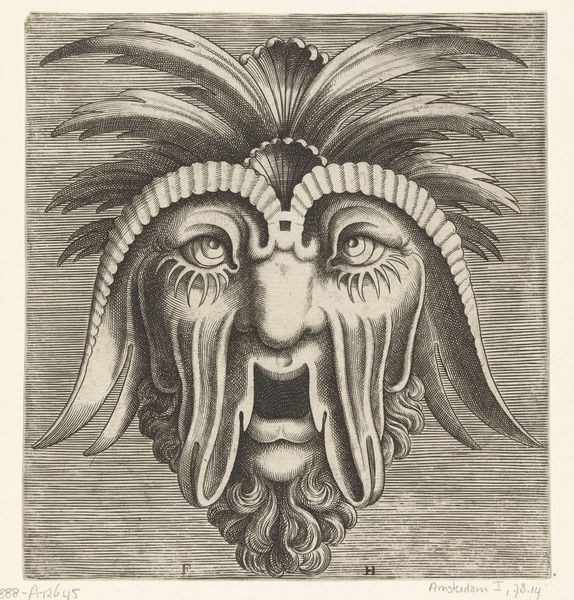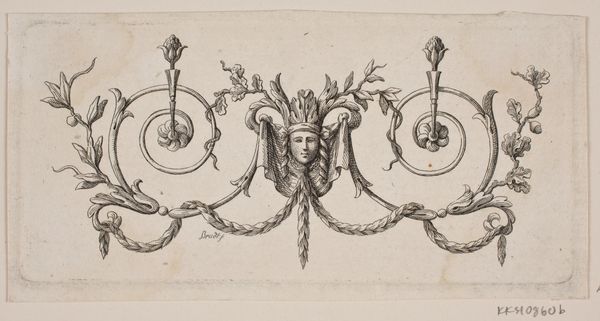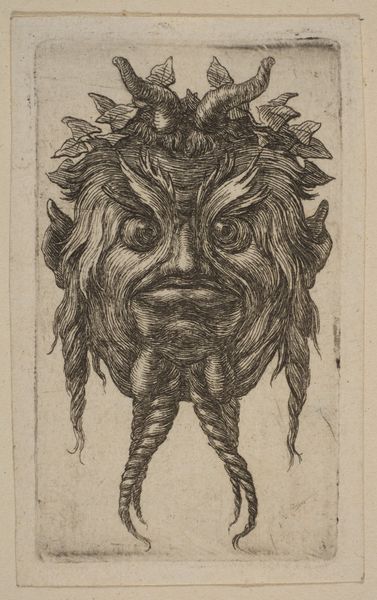
drawing, engraving
#
drawing
#
baroque
#
pen drawing
#
pen sketch
#
personal sketchbook
#
pen-ink sketch
#
line
#
pen work
#
sketchbook drawing
#
sketchbook art
#
engraving
#
doodle art
#
fantasy sketch
#
initial sketch
Dimensions: height 45 mm, width 178 mm
Copyright: Rijks Museum: Open Domain
Curator: I see stillness. Everything is delicately poised, those birds at the edge, that sleeping face... like holding my breath in visual form. Editor: That's a lovely way to put it. We're looking at a drawing called "Vignet met een mascaron, twee vogels en bladranken"—A Vignette with a mascaron, two birds, and foliage—by Bernard Picart, made sometime between 1683 and 1733. It's currently housed here at the Rijksmuseum. Curator: Oh, Picart! No wonder. There's something about those flowing lines, a Baroque elegance with an almost playful looseness. Like watching a perfectly choreographed dance that might suddenly break into spontaneous giggles. Do you get that feeling of movement arrested? Editor: Absolutely. Vignettes like these were often used as decorative elements in books or prints, almost like visual punctuation marks. Their purpose was to elevate the main text. And given the socio-political climate, I imagine that these little flights of fancy allowed people to escape to the more simple joys of nature through the form of visual storytelling and imagery. Curator: Exactly! They frame meaning and evoke. The mascaron's closed eyes might speak to slumber, the unconscious, or even artistic reverie, don’t you think? The birds, those foliage scrolls… they're both earthly and elevated, hinting at worldly concerns, yes, but with the divine hovering nearby. Editor: Precisely! By situating artwork into historical movements, one could assume these are symbols reflective of Baroque sensibilities as a status symbol, with this fantasy reflecting access and power. The foliage can even be interpreted to further expand to religious power due to biblical connotations. Curator: It makes me wonder about Picart's own state of mind while drawing this. Was he dreaming? Meditating? Did it become more of a mental and spiritual exercise? Or even a game? And, of course, these images remind me of our responsibilities to protect nature as the stewards of the land we roam today. Editor: Interesting... I would interpret its value less tied to current environmental responsibilities and see this more for the possibilities to use such an image as a statement of rank during this period, with less of an emphasis on personal conviction for nature's beauty. That's what art provides us today--a rich ground for interpretive potential. Curator: And therein lies the joy. Editor: Precisely!
Comments
No comments
Be the first to comment and join the conversation on the ultimate creative platform.
